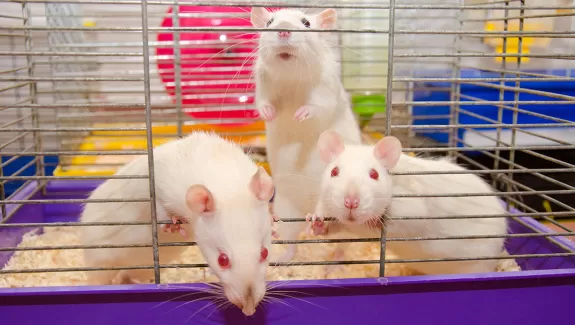
What’s Free About the Free Operant?
There is another question to be answered before considering the question in the title of this commentary: “What is a free operant, anyway?” It is an expression that sometimes appears in talks and articles, but it isn’t as commonly used as it once was. Free operant originally described an experimental arrangement in which the organism could move about freely, without constraint. It was used in part to distinguish the typical operant situation from the Pavlovian or respondent, one in which the experimental animal was restrained so that the reflex could be measured more easily. Thus, in a narrow sense, the free operant summarizes the circumstances of Skinner’s experimental arrangement. In a broader sense, it describes behavior controlled by its consequences, that is, operant behavior.
Now, to the question posed in the title. In a methodological sense, the operant response is indeed free. There are not physical constraints to prevent nor physical “assists” to facilitate the response. But could the operant be free in the everyday sense of behavior being novel, creative, or extraordinarily robust? Behavior certainly maybe all these things, and, in this very specific sense, sometimes behavior is also labeled as “free.” Yet, this is not the meaning of the free operant. Labeling, in this way, raises the philosophical question of whether it is the organism who is free to decide when and how to behave. Is the organism the master of its fate, the captain of its soul? Can it whimsically respond or not as it chooses? 
This last question cuts to the heart of determinism, one of the core assumptions of behavior analysis, and every other science for that matter. Simply put, determinism is the philosophical position that everything has a cause. Science takes it one step further and assumes that the reasons can be known. Without this deterministic assumption, there can be no behavior analysis. Imagine a world in which we could not predict, and control behavior based on what we know about the organism’s history and present circumstances — utter chaos. In fairness to determinism, I should note that determinism is a little more nuanced than its essence, that I have described here. Still, this definition suffices for our discussion of the ramifications of the free operant.
Back to the free operant and the question of its “freeness.” Doesn’t the rat choose whether to respond via the lever or not or to engage in some response other than pressing the lever? Indeed, there is a choice involved when two responses are possible, and the two are mutually exclusive (“I can respond on the lever but can’t at the same time be on the other side of the chamber”). Two points, though: First, whether the rat responds or not depends on the circumstances. If it is hungry and the only way it can get food is by responding on the lever, guess what? If it isn’t hungry or if lever-pressing does not result in food, you can guess what the choice will be. Second point: Notice I did not say the rat will choose not to respond. That is because the rat is not the agent of its behavior. The rat’s behavior is not controlled by some inner agent or mind, but by its circumstances, present and historical. So, yes, there is a choice, but the choice is determined—there is that word again) by the two sources just identified.
The bottom-line answer to the question posed in the title is unequivocal “it depends on what you mean by free.” Is there such a thing as a free operant? Yes, in a methodological sense that the organism is not physically constrained (although in the case of a rat, its operating space is limited to the operant chamber). No, in the philosophical sense implied by adopting a behavior-analytic worldview. This view includes an assumption that behavior is orderly and that we can know its causes.


